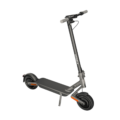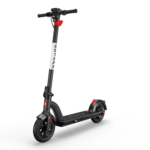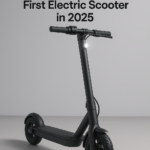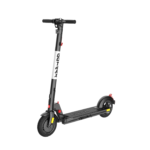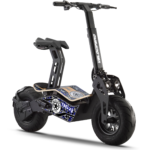- Home
- Scooters
- Electric Scooters
- Xiaomi Electric Scooter 4 Go
Xiaomi Electric Scooter 4 Go
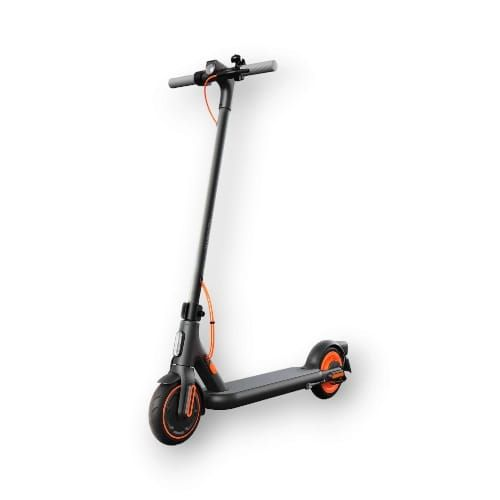

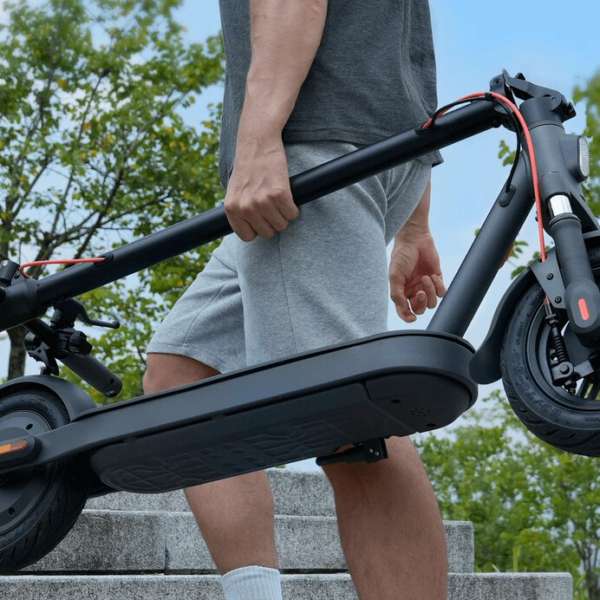
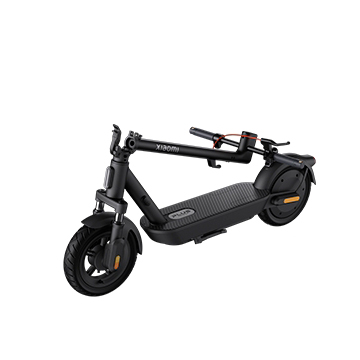
- Battery Range: 18 km
- Top Speed: 20 km/h
- Motor Power: 250 W rated
- Weight Capacity: 90 kg (198 lb)
- Charging Time: 6 hours
- Scooter Weight & Portability: 13.7 kg (30.2 lb)
PROS
- Long 60 km real-world range at a commuter pace
- Enhanced comfort: 12″ tires, dual-spring suspension, wider deck
- Smart lighting and motor lock via app
- Solid steel frame tolerates heavier riders
- Splash-resistant design for varied conditions
CONS
- Limited top speed (25 km/h)
- Heavier than prior models
- Long charging time (~9 h)
Introduction: What the “4 Go” Aims to Do
The Xiaomi Electric Scooter 4 Go Specifications point to a very focused mission: a light, simple, city-speed scooter for quick daily hops. Xiaomi trims excess features and prioritizes the essentials—easy starts, capped speed, run-flat tires, a compact frame, and a clear dash—so new riders and budget-minded commuters can move through short urban trips without fuss. Because many people travel less than five kilometers at a time, the 4 Go aims squarely at that pattern. It favors consistency over aggression and cost efficiency over raw performance.
Right away, the spec sheet tells the story. You get a 250 W rated motor (peaking at 450 W), a 165 Wh battery sized for up to 18 km of range, and a 20 km/h top speed. You also get 8.1-inch run-flat radial hollow tires that shrug off punctures, plus a dual-brake system—front electronic and rear drum—that responds predictably. Meanwhile, the chassis uses automotive-grade steel, which adds rigidity at a low price. Therefore, the 4 Go feels composed at neighborhood pace, even when paths are a touch bumpy.
Finally, the Xiaomi Home app rounds out the package with battery info, remaining mileage, Bluetooth motor lock, firmware updates, and KERS tuning. You won’t find pro-level tweaks or performance graphs. You will find exactly what you need to monitor charge, lock the wheel in a café, and keep the scooter’s software current. For daily riders who value reliability and a low barrier to entry, that balance makes sense.
Motor & Throttle: Calm Starts That Build Confidence
Power delivery often makes or breaks a first scooter. The 4 Go chooses a calm approach. It uses a front-wheel hub that rolls on gently, then builds toward the 20 km/h cap. Because the throttle mapping stays smooth, takeoffs don’t lurch. That matters at intersections and on shared paths, where you want steady control more than explosive acceleration. As you nudge the thumb throttle, the scooter feeds in power predictably, so your shoulders and elbows stay relaxed and your line stays straight.
Moreover, the capped top speed keeps the chassis planted. Light scooters feel best under 25 km/h; above that, every bump asks more of the stem and the rider. Here, Xiaomi pairs the modest motor with a sturdy steel frame, so the front end doesn’t chatter when the road surface changes. Consequently, the 4 Go rides with an easy rhythm: push off, roll on, cruise at pace, then ease off into regen before the brake lever joins in.
Hills tell the same story. The scooter is honest about its 10% climbing claim. You can crest neighborhood rises without drama, but you shouldn’t expect aggressive hill sprints. Even so, that restraint helps maintain range and keeps the deck serene. For a commuter who values predictability over peak numbers, the 4 Go’s motor tune hits a smart middle ground.
Speed & Control: Why 20 km/h Fits City Reality
Many riders new to scooters think they want more speed. After a few commutes, most decide they want flow. At 20 km/h, the 4 Go tracks with bike-lane pace, crosses short gaps cleanly, and still leaves headroom for quick stops. Because the scooter avoids heavy motors and tall gearing, it also avoids the twitchiness that can sneak into small frames at higher velocities. As a result, you keep your focus where it belongs—line choice, surface scans, and other road users.
Additionally, the three modes help you match context. Walk at 6 km/h keeps you polite on crowded promenades. D at 15 km/h saves battery and keeps noise low on multi-use paths. S at 20 km/h moves with brisk traffic in painted bike lanes. Switching modes happens on the bar, not in a sub-menu, so you adapt on the fly. Over time, you’ll learn when to downshift before rough patches and when to hold the faster setting on glassy stretches.
Because speed sits at a sensible cap, the brakes don’t need heroic performance to feel safe. They simply need to react smoothly. That brings us to stopping power.
Braking: Electronic Front + Drum Rear for Predictable Stops
The 4 Go uses two systems that act together: front electronic braking (with E-ABS/regen) and a rear drum brake. You roll off the throttle and feel gentle deceleration first; then, as you pull the lever, the electronic and mechanical systems engage in sync. That sequencing lowers the chance of a sudden weight shift that could unsettle a light front end. Furthermore, the drum sits shielded from weather and grit, which keeps maintenance simple and performance steady.
Because the scooter runs puncture-resistant tires and a steel frame, the chassis feels reassuring during hard stops. The contact patch stays planted, and the stem doesn’t telegraph flex. On wet pavement, you still ride at common-sense speeds, yet the system’s smooth onset helps you keep traction. For new riders, that friendly behavior builds trust quickly.
As a bonus, energy recovery helps recoup a little charge on rolling routes. The gain won’t transform range, but it does take the edge off the battery meter on stop-and-go days. You can also tune KERS intensity in the app, which lets you choose a stronger engine-brake feel for hilly neighborhoods or a lighter glide for flat promenades.
Battery & Range: Built for Short, Frequent Trips
The 165 Wh pack targets short hops by design. On flat ground and sensible speeds, many riders will cover 5–10 km daily without dipping into the red. Because the scooter carries less mass than bigger models, the battery doesn’t waste energy moving weight you don’t need. Additionally, the 20 km/h cap keeps current draw in a moderate range, so the meter falls slowly and predictably.
Charging stays simple. The adapter fills the pack in about six hours, which lines up with overnight routines. You ride to work or class, roll home, then plug in at dinner and forget it. Meanwhile, the app’s remaining mileage readout gives you a practical sense of what you can do next morning—useful if your route changes or if a detour appears.
Cold weather will trim range, and headwinds will nibble at it too. Even so, the small pack’s calm discharge profile helps it handle typical seasonal swings without big surprises. If you want to baby the battery for longevity, keep daily charges between roughly 30–90% and avoid deep drains. The scooter’s BMS protections do their part; your habits do the rest.
Tires & Ride Feel: Run-Flat Convenience with Hollow-Core Comfort
Punctures derail commutes. Xiaomi counters that risk with 8.1-inch radial hollow run-flat tires. The carcass integrates internal voids that add a touch of compliance, which softens sidewalk seams and expansion joints. You still feel the surface—this isn’t a plush pneumatic—but the sharpness fades. More importantly, you don’t fix flats, you don’t top up tubes, and you don’t carry plugs. You simply ride.
Because the scooter weighs 13.7 kg, those tires also help stability. The footprint and structure support the chassis without asking for much rider input. When you carve slow turns on shared paths, the front contact patch tracks faithfully. When you pass over pavers or tile, the hollow design blunts chatter that would shake your wrists on solid rubber.
Naturally, there are limits. You won’t float through potholes the way a large 10-inch pneumatic does. Yet the 4 Go’s intended routes—bike lanes, quiet streets, and park paths—rarely demand that level of cushioning. For its class, the run-flat approach offers a sweet mix of zero punctures and enough compliance to keep your hands relaxed.
Frame & Ergonomics: Steel Simplicity That Feels Planted
Xiaomi builds the 4 Go around an automotive-grade steel frame. Steel allows thin-wall shapes with good strength at a sensible cost. As a result, the deck and stem feel notably rigid for a budget scooter. You won’t chase micro-wobbles at speed, and you won’t hear creaks from flexy joints. Moreover, the wiring runs cleanly, so there’s little to snag when you park.
Ergonomically, the bar height suits a wide band of riders, and the TPE grips feel stable with or without gloves. The multifunction dash shows speed, battery bars, and status icons large enough to read at a glance. A single function button controls power, lights, and mode switching without sub-menus or long presses that distract you. Because the cockpit stays this simple, you keep eyes up and attention forward.
Finally, the deck shape leaves enough room for a staggered stance. You can ride parallel for short sprints, then shift to a diagonal posture to loosen your hips for longer stretches. The scooter’s balance point sits near the stem, so lifting the front to pivot around tight corners feels natural.
Non-Folding, Quick-Release Stem: What It Means in Practice
Unlike most adult scooters, the 4 Go does not use a folding latch. Instead, it uses a quick-release stem you can remove in a few steps for transport or storage. That design has trade-offs. On the plus side, you avoid one of the most common rattle sources: a worn or loose folding joint. The bar stays rock solid ride-to-ride. On the minus side, you won’t collapse the scooter in seconds to carry it up stairs with one hand.
For many owners, the compromise makes sense. If you roll from apartment to street, ride a short loop, then park in a hallway or garage corner, you never need to disassemble the stem. If you travel by car once a week, you can pop the stem off and stack the chassis neatly in a trunk. And if you ride transit daily with lots of boarding, you might prefer a folding model instead. Either way, the 4 Go keeps the structure tight, and that quiet ride matters more than a one-click fold for plenty of people.
Lighting & Visibility: Small Scooter, Big Signals
Budget scooters often skimp on lighting. The 4 Go doesn’t. You get a 2 W headlamp with a glare-optimized angle that lights the path without blinding others. You also get a larger taillight and omnidirectional reflectors. For city twilights and early mornings, that package raises your profile. You can even set the taillight to stay on through the app, which adds a passive safety layer on dim routes.
Combined with the scooter’s restrained speed, that visibility package promotes calm traffic behavior. Drivers see you sooner. Other cyclists clock your location. Pedestrians spot your approach in their peripheral vision. Because the braking system’s initial regen phase slows you gently, you avoid sudden tail wiggles that can confuse those around you.
Naturally, night riding still demands caution. You ride at appropriate speeds, you scan for glass and metal edges, and you avoid deep puddles. However, as everyday lighting packages go, the 4 Go’s is unusually thoughtful at this price.
App & Smart Details: Enough Tools, No Noise
The Xiaomi Home app stays focused on practical jobs. You open it, and you see remaining mileage and battery info right away. You can lock the motor, which adds a beeping alarm if someone tries to push the scooter. You can tune KERS strength and apply firmware updates when Xiaomi releases them. That’s it—no social feeds, no clutter, no needless pop-ups.
These tools matter most for first-time owners. Mileage estimates help you plan detours or errands without mental math. Firmware updates fix small issues and sometimes improve behavior. The lock deters casual roll-aways outside shops. Because the scooter’s mission is “short hops, zero drama,” the software follows suit: simple, legible, and reliable.
Daily Scenarios: Where the 4 Go Shines
Short commutes. You leave home, ride 2–4 km to work or class, and park indoors. The scooter warms up quickly, rolls at 20 km/h, and dodges traffic snags. Because you don’t carry extra battery mass, the ride feels lively even with modest power.
Errand chains. You link a grocery stop, a parcel pickup, and a friend’s place across town. The run-flat tires ignore stray staples and thorns, so you don’t lose the afternoon to a puncture. The Bluetooth lock keeps it put while you pop in.
Park loops. You cruise shaded paths at 15 km/h in D mode, then switch to S briefly for an empty straight. The dual-brake setup helps you trim speed before pedestrians without abruptness. You finish with battery to spare.
Mixed surfaces. You cross pavers, tile, and patched asphalt. The hollow-core tires cut chatter enough to keep your hands fresh, and the steel frame damps the rest. You arrive without wrist buzz or stem squeaks.
Maintenance & Ownership: Low Chores, Clear Routines
The 4 Go keeps upkeep simple. Run-flat tires mean no tube repairs. The rear drum shrugs off dust and rain better than exposed discs and needs less fiddling. The electronic front brake avoids pad swaps entirely. Routine care becomes a short checklist: check fasteners monthly, wipe the deck and grips, and keep the charge connector clean.
Battery care stays straightforward. Avoid long deep discharges if you can. Charge after rides, but don’t obsess over 100%—you can stop at roughly 90% for daily loops and top off for longer ones. Store indoors, away from heat, and keep the scooter dry. If you commute through drizzle, the IPX4/IPX6 protection helps, but you still skip standing water and heavy storms.
Because the scooter lacks a folding hinge, the cockpit tends to stay quiet. If you hear rattles, they usually trace back to accessories or loose bolts, not structural joints. That simplicity keeps ownership light—exactly the point of this model.
Comparisons: 4 Go vs. Other Xiaomi & Budget Scooters
Inside Xiaomi’s range, the 4 Go sits below the 4 Lite and 4 in battery size and speed ambition. It weighs less than many peers and costs less too. If you need 35 km range or faster climbing, the Scooter 4 makes more sense; however, it brings extra weight and price. Conversely, if you want the easiest first e-scooter with the fewest headaches, the 4 Go’s run-flat tires and tight, non-folding stem give it a quiet-ride advantage.
Against similarly priced budget scooters from other brands, you’ll often find tube tires, looser stems, and generic apps. The 4 Go counters with a cleaner dash, a polished app, and an unusually comprehensive lighting set. You trade away a compact one-click fold, but you gain structural calm and fewer maintenance surprises. For short-range city life, that’s a fair trade.
Who Should Buy It (and Who Shouldn’t)
Buy it if you want an affordable, low-maintenance, short-range scooter that feels stable at 20 km/h, locks easily via app, and shrugs off punctures. Students, first-time riders, and urban errand-runners fit this profile well.
Skip it if you need longer range, steeper hill pace, or daily train carry with rapid folding. In those cases, look at models with larger batteries, rear-drive punch, or classic folding hinges—even if that means more weight and cost.
In brief, the Xiaomi Electric Scooter 4 Go Specifications describe a realistic commuter tool for short city patterns, not a weekend speed project. If that matches your routes, the 4 Go will feel like the right tool from day one.
Value & Final Verdict
Because it strips complexity and focuses on everyday wins, the 4 Go delivers high value per euro. You pay for exactly what you’ll use each day: reliable starts, puncture-proof tires, calm braking, strong lighting, and app basics that actually matter. You don’t pay for 30+ km/h speed you won’t tap in traffic, heavy batteries you won’t drain on short loops, or pro-grade suspension you won’t need on smooth bike lanes.
Consequently, the verdict is simple: if your rides are short, your storage is straightforward, and your goal is consistent transportation with minimal chores, the 4 Go earns a top spot on your shortlist. It keeps the peace at 20 km/h, it avoids flat-related stress, and it makes small trips feel effortless. That, in a crowded city, is exactly what a scooter should do.
Specifications
General
| Model The Model specifies the exact version or name of the scooter. It helps identify its unique design, features, and specifications within the manufacturer’s product line. Knowing the model makes it easier to compare options, find compatible accessories, or look up support information. | Electric Scooter 4 Go |
| Brand The Brand identifies the manufacturer or company that designs and produces the scooter. A trusted brand is a sign of quality, reliability, and good customer support. Well-known brands often have higher standards for safety, performance, and after-sales service, giving you more confidence in your purchase. | Xiaomi |
| Release Date The Release Date indicates when the scooter model was officially launched on the market. This helps you know how current the design, technology, and features are. A newer release date often means updated components, improved performance, and the latest safety or smart features. | 01 January 2023 |
| Recommended Age Recommended Age indicates the minimum age range that the scooter is designed for, based on safety, size, and ease of use. Following the recommended age helps ensure that riders can handle the scooter’s speed, weight, and controls comfortably and safely. Always check local laws and use protective gear, especially for younger riders. | 16–50 years |
Performance & Power
| Motor Power (Wattage) What it means: The motor power, measured in watts (W), shows how strong the scooter’s electric motor is. Why it matters: Higher wattage usually means better acceleration, more torque, and improved performance on hills or rough terrain. For example, a 250W motor is good for flat city roads and light riders, while a 500W or 1000W motor provides more power for faster speeds or climbing steep inclines. | 250 W rated / 450 W max |
| Top Speed The Top Speed indicates the maximum speed that the scooter can reach under optimal conditions. It’s usually measured on level ground with a fully charged battery and an average rider weight. A higher top speed allows you to travel longer distances faster, but always ensure you ride within legal speed limits and your personal comfort zone for safety. | 20 km/h (modes: Walk 6, D 15, S 20) |
| Battery Capacity Battery Capacity refers to the total amount of energy the scooter’s battery can store, usually measured in ampere-hours (Ah) or watt-hours (Wh). A higher battery capacity means you can ride longer distances on a single charge, reducing the need for frequent recharging. Keep in mind that actual range can vary depending on rider weight, terrain, speed, and weather conditions. | 165 Wh (18650 Li-ion) |
| Estimated Range per Charge The Estimated Range per Charge indicates the average distance the scooter can travel on a single full battery charge. This range is calculated under optimal conditions, such as flat terrain, moderate speed, and average rider weight. Real-world range may vary depending on riding style, terrain, weather, and load. A longer range means fewer recharges and greater freedom for longer trips. | up to 18 km (test conditions stated by Xiaomi) |
| Hill Climb Ability Hill Climb Ability describes the maximum incline or slope that the scooter can handle while maintaining stable performance. It’s typically expressed as a percentage or in degrees. A higher hill climb rating means the scooter can tackle steeper hills without losing too much speed or power. Actual climbing performance may vary based on rider weight, battery charge, and terrain conditions. | up to 10% grade |
| Drive System The Drive System refers to how power from the motor is delivered to the wheels. Electric scooters typically use either a hub motor (directly integrated into the wheel) or a chain/belt drive system. A high-quality drive system ensures smooth acceleration, efficient power transfer, and low maintenance. The choice of drive system affects performance, noise level, and overall ride experience. | Front-wheel hub (per manual product diagram) |
Charging & Electrical
| Charging Time Charging Time indicates how long it takes to fully recharge the scooter’s battery from empty to 100% using the standard charger provided. Faster charging means less downtime and more time on the road. Actual charging time may vary slightly depending on battery capacity, charger output, and environmental conditions. | approx. 6 hours |
| Battery Type Battery Type refers to the specific technology used in the scooter’s battery, which affects performance, lifespan, weight, and charging time. Most modern electric scooters use high-quality lithium-ion (Li-ion) batteries because they offer a good balance of energy density, durability, and low maintenance. A reliable battery type ensures consistent power delivery and longer riding ranges. | 18650 Li-ion with Xiaomi BMS safeguards (over-charge, over-discharge, temp., over-current, short-circuit, undervoltage) |
| Removable Battery A Removable Battery means the battery pack can be easily detached from the scooter for convenient charging and replacement. This feature allows you to charge the battery separately, swap it with a spare for extended range, or securely store it indoors in extreme weather. Removable batteries add flexibility and make it easier to keep your scooter powered up wherever you are. | No |
| Regenerative Braking Regenerative Braking is an energy-saving feature that converts some of the energy normally lost during braking back into battery power. When you slow down or brake, the motor works in reverse to generate electricity, which helps extend the scooter’s range and improves overall efficiency. This system also reduces wear on traditional brake components, leading to lower maintenance over time. | Yes |
| Lighting Lighting refers to the built-in front and rear lights that enhance visibility and safety when riding in low-light conditions or at night. Good lighting helps you see the road ahead and ensures that other road users can see you. Many scooters include LED headlights, taillights, and sometimes brake lights or side reflectors for added safety and compliance with local traffic regulations. | 2 W headlamp (anti-glare angle), larger taillight, side reflectors |
Build & Dimensions
| Scooter Weight Scooter Weight refers to the total weight of the scooter when fully assembled, including the battery. This affects how easy it is to carry, lift, and store the scooter when not in use. A lighter scooter is more portable and convenient for commuting, especially if you need to carry it upstairs or onto public transport. Keep in mind that a sturdy frame and quality components may add to the weight but also contribute to better durability and ride stability. | 13.7 kg (30.2 lb) |
| Maximum Rider Weight Maximum Rider Weight indicates the highest rider weight that the scooter is designed to safely support while maintaining optimal performance and stability. Staying within this limit helps ensure reliable acceleration, braking, and climbing ability, and it protects the frame, suspension, and motor from excessive strain. Exceeding the recommended limit may reduce performance and increase wear on components. | 90 kg (198 lb) |
| Deck Size Deck Size refers to the dimensions of the scooter’s standing platform. A wider and longer deck provides more foot space, allowing you to stand comfortably and adjust your stance while riding. A well-sized deck improves balance and stability, especially on longer rides or at higher speeds. Compact decks, on the other hand, help keep the scooter lightweight and portable. | Not specified by manufacturer |
| Handlebar Height Handlebar Height refers to the distance from the deck to the handlebars, which affects your riding posture and comfort. An appropriate handlebar height helps you maintain good balance, reduces strain on your back and arms, and makes steering more comfortable. Some scooters have adjustable handlebars to fit riders of different heights, while others have a fixed height for a streamlined design. | 1173 mm (46.2 in) overall height (unfolded) |
| Folding Mechanism The Folding Mechanism describes how easily and securely the scooter can be folded for carrying and storage. A well-designed folding system lets you quickly collapse the scooter into a compact size, making it convenient to transport on public transit, store under a desk, or fit into a car trunk. Look for sturdy latches and safety locks to ensure the scooter stays firmly in place when folded or unfolded. | No |
| Dimensions Folded Dimensions indicate the size of the scooter when it’s fully folded. This measurement shows how much space the scooter will take up when stored or carried, making it easier to check if it will fit in your car trunk, under a desk, or in a closet. Compact folded dimensions are ideal for commuters who need to bring their scooter on public transport or store it in tight spaces. | N/A (non-folding); disassembled height ~440 mm as storage reference |
| Material Material refers to the primary construction materials used for the scooter’s frame and key components. High-quality materials like aircraft-grade aluminum, reinforced steel, or durable composites provide strength, stability, and a lighter overall weight. A sturdy material ensures the scooter can handle daily wear and tear while maintaining safety and performance. | SPFH590 automotive-grade steel frame; concealed wiring |
Safety & Control
| Brake Type(s) Brake Type(s) describe the braking systems the scooter uses to help you slow down or stop safely. Common brake types include mechanical brakes (like drum or disc brakes), electronic brakes, and foot brakes. Many scooters combine multiple braking systems for added safety and shorter stopping distances. The type and quality of brakes affect your control, especially when riding at higher speeds or on slopes. | Front electronic (E-ABS) + rear drum brake (simultaneous actuation) |
| Suspension Suspension refers to the system that absorbs shocks and vibrations while riding, providing a smoother and more comfortable ride over uneven or rough surfaces. Scooters may have front suspension, rear suspension, or dual suspension for better shock absorption and stability. Good suspension helps reduce rider fatigue and improves control, especially when riding on bumpy roads or off-road paths. | None (comfort via 8.1″ radial hollow run-flat tires) |
| Tire Type Tire Type refers to the kind of tires the scooter uses, which directly affects ride comfort, traction, and maintenance. Common types include solid (airless) tires, pneumatic (air-filled) tires, or hybrid options. Pneumatic tires offer better shock absorption and a smoother ride on rough surfaces, while solid tires are puncture-proof and require less upkeep. The right tire type helps ensure safe handling and a comfortable ride in different conditions. | Run-flat, hollow (radial); puncture-resistant design |
| Tire Size Tire Size indicates the diameter and width of the scooter’s tires, which affect ride comfort, stability, and how well the scooter handles different terrains. Larger tires generally offer better shock absorption and a smoother ride over bumps and rough surfaces, while smaller tires keep the scooter lighter and more portable. Choosing the right tire size helps ensure a balance between agility and comfort. | 8.1 in (front & rear) |
| Kickstand The Kickstand is a built-in stand that allows you to park your scooter upright when it’s not in use. A sturdy kickstand keeps the scooter stable and prevents it from tipping over, protecting it from scratches and damage. It also makes storing and accessing your scooter more convenient, whether you’re at home, work, or on the go. | Yes |
| Water Resistance Rating Water Resistance Rating indicates how well the scooter is protected against water and moisture, usually shown as an IP (Ingress Protection) rating. This rating helps you understand whether the scooter can handle light rain, splashes, or wet roads without damage. While most scooters are not fully waterproof, a good water resistance rating adds peace of mind when riding in changing weather conditions. Always avoid deep puddles or submerging the scooter to protect its electrical components. | IPX4 (scooter), IPX6 (battery) |
Features & Extras
| Display/Console The Display (or Console) shows important real-time information about your ride, helping you monitor your scooter’s status at a glance. Typical displays show speed, battery level, distance traveled, and riding mode. Some models also include additional features like Bluetooth connectivity, app integration, or backlighting for better visibility at night. A clear and easy-to-read display enhances safety and convenience on every trip. | Multifunction LED dashboard (speed, battery, status) |
| Ride Modes Ride Modes refer to the different speed and power settings you can choose to match your riding style or road conditions. Common modes include eco for maximum range and energy efficiency, standard for everyday balance, and sport or turbo for higher speed and stronger acceleration. Switching between ride modes allows you to customize performance, conserve battery, and ride safely in various environments. | 3: Walk (6 km/h), D (15 km/h), S (20 km/h) |
| Smart App Connectivity Smart App Connectivity lets you pair your scooter with a dedicated mobile app via Bluetooth. Using the app, you can monitor real-time ride stats like speed, battery level, and range, adjust settings such as ride modes or cruise control, lock the scooter for added security, and sometimes receive firmware updates. This feature adds convenience and allows you to personalize your riding experience right from your smartphone. | Xiaomi Home/Mi Home: remaining mileage, battery info, Bluetooth motor lock, firmware updates, KERS setting |
| Anti-Theft System The Anti-Theft System helps protect your scooter from unauthorized use or theft. This feature can include built-in alarms, electronic motor locks, GPS tracking, or remote locking through a mobile app. A good anti-theft system provides peace of mind when parking your scooter in public spaces, adding an extra layer of security to safeguard your investment. | Bluetooth motor lock with push alarm (via app) |
| Cruise Control Cruise Control allows you to maintain a steady speed without continuously holding the throttle. This feature makes longer rides more comfortable by reducing hand fatigue and providing a smoother, more relaxed riding experience — especially on flat, open roads or bike lanes. For safety, cruise control can usually be easily activated or deactivated while riding. | Yes |
| Accessories Included Accessories Included lists the additional items that come with the scooter to enhance your riding experience and convenience. Common accessories may include a charger, kickstand, bell, lights, phone holder, or carrying strap. These extras add value by making your scooter safer, easier to use, and ready to ride straight out of the box. | Power adapter/charger, user manual (box contents) |
Warranty & Compliance
| Warranty Period The Warranty Period indicates how long the manufacturer guarantees the scooter against defects in materials and workmanship under normal use. A good warranty provides peace of mind, showing the brand’s confidence in its product quality. Always check what parts are covered, such as the frame, battery, and motor, and follow the maintenance guidelines to keep your warranty valid. | Region-dependent; up to 2 years in many EU markets (consumer law) |
| Certifications Certifications confirm that the scooter meets specific safety, quality, and environmental standards set by recognized organizations or regulatory bodies. Common certifications may include CE, RoHS, UL, or other local compliance marks, depending on your region. These certifications ensure that the scooter is manufactured to high standards and is safe and legal to use in your country. | IPX4/IPX6 ingress ratings; regional conformity (e.g., EU/CE) per manual and market docs |




